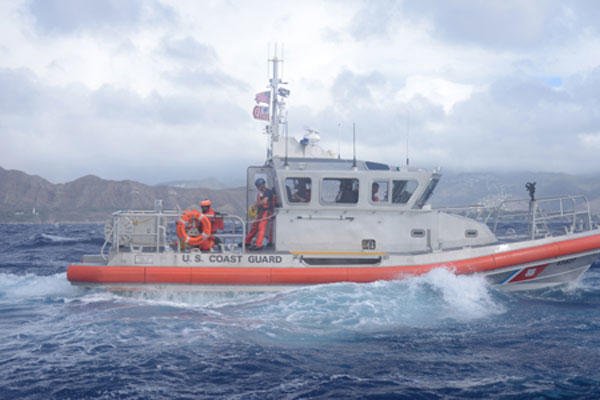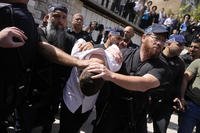You may have heard of the Coast Guard’s National Motor Lifeboat School, the center for excellence that trains the Coast Guard’s lifesavers near the notoriously perilous Columbia River bar. The school is the only one of its kind in the United States, but that didn’t keep the school’s instructors from training Coast Guardsman in the worst of conditions across the nation.
Saying Aloha to the Pacific’s heavy seas, National Motor Lifeboat School’s instructors just finished two weeks of intensive search and rescue training off the coast of Hawaii. Lifesavers from throughout the Pacific gathered at Station Honolulu for a series of unique skill enhancement evolutions.
Instructors from the National Motor Lifeboat School chose Hawaii for the consistently challenging offshore sea conditions as well as Station Honolulu’s access to two of the Coast Guard’s state of the art 45-foot Response Boat-Mediums, a new and advanced search and rescue vessel. Instructors are in the process of developing training on the new response boat, and having the two vessels at Station Honolulu at such a short distance to effective offshore sea conditions made an ideal location.
“We have people from several different units that we brought together here because they have two of the response boat-mediums that we are training on at Station Honolulu, with weather conditions where we can get out into open ocean swell,” said Petty Officer Ryan Widdows, a first class boatswain’s mate from the National Motor Lifeboat School.
Classroom training was followed by extensive towing and gear passing practice offshore of Diamond Head, Oahu. Sea conditions here allowed for practice approaching the vessel’s maximum operating parameters of 12-foot sea swells, in winds as high as 40 mph.
The response boat boasts an improved design, new ergonomics and enhanced safety features, making boat crews more effective in performing their multiple missions. Twin diesel engines with water-jet propulsion create a safer platform to retrieve people from the water and also protect the engine from debris. It is part of the Coast Guard’s plan to standardize and revitalize its shore-based boat fleet.
Coast Guard Station Honolulu received its first response boat-medium June 14, 2010, and learning how to best operate the response boat is critical in the expanse of the Pacific. The 14th Coast Guard District, headquartered in Honolulu, also utilizes the asset at stations Maui and Guam in support of their roles in the Coast Guard’s 11 statutory missions.
The National Motor Lifeboat School’s hometown training grounds provides an ideal training environment with its deep river channel, rock jetties and coastal surf zones with waves exceeding 20 feet. But Hawaii’s high surf and jagged coastline was a worthy competitor. The Coast Guard’s lifesavers readied for intense conditions so regardless of surf or storm the Coast Guard will be there when you need them.





























